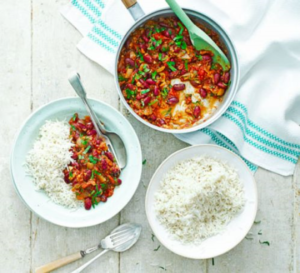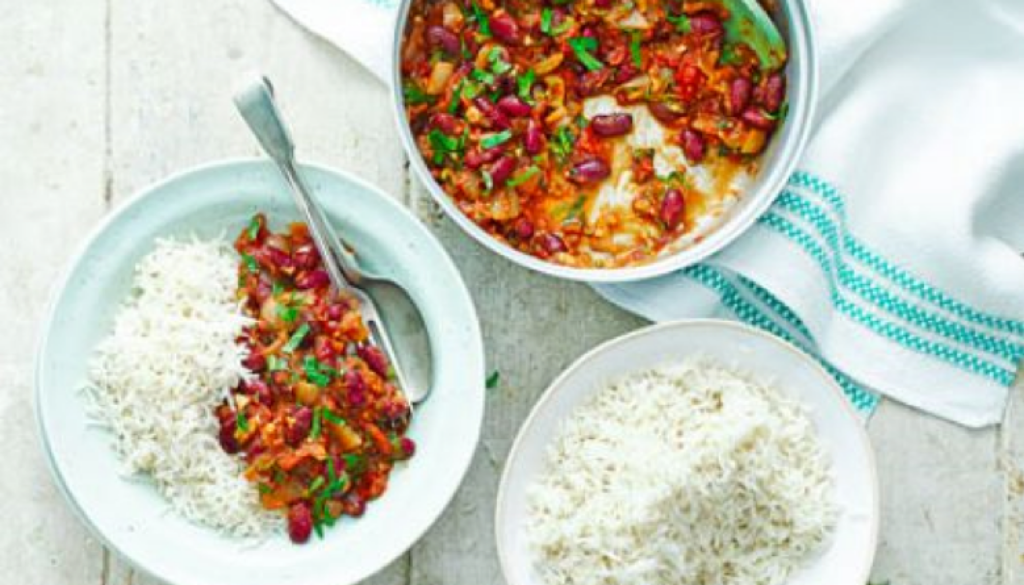Kidney Bean Curry (Rajma)
Prebiotics
By Aparna Mele, MD
Prebiotics are types of dietary fiber that that arrive undigested at the colon, where they are readily fermented by beneficial bacteria, allowing them to grow and thrive. In order to be classed as a prebiotic, they must be selectively fermented by these good bugs, whilst being ignored by pathogenic bacteria. The by-products created during this fermentation include short-chain fatty acids such as acetate, propionate and butyrate. Short-chain fatty acids provide a fuel source for the cells of the intestinal wall. Essentially, prebiotics feed the friendly bacteria in your gut and nourish our intestinal cells. The benefits of stimulating the growth and activity of both beneficial bacteria and mucosal cells are many. They include a healthy gut barrier that protects against invasion of pathogens or toxins, greater resistance to infection, modulation of the immune system and inflammation, promoting healthy bowel movements, and increased absorption of minerals such as calcium and magnesium. This helps the gut bacteria produce nutrients for your colon cells and leads to a healthier digestive system, improve metabolic health, and even boost your immune system.
Legumes (beans, peas, lentils, soybeans) contain prebiotic galacto-oligosaccharides (GOS), raffinose-family oligosaccharides (ROS) and resistant starch. Recent studies have found that the GOS extracted from legumes (dose-dependently) significantly increased beneficial bacterial counts, and reduced appetite, food intake and inflammation in overweight adults. Legumes are also great nitrogen fixers, helping to improve the health and quality of the soil and promote plant growth (plants absorb nitrogen via their roots and use it to synthesize proteins). For this reason, it is often used in crop rotation to fertilize soil and consequently contribute to higher yields.
Help your gut, our planet, and your local farms and try incorporating more legumes in your life!
Kidney Bean Curry (Rajma)

Source: Good Food magazine May 2016
Ingredients
- 1 tbsp vegetable oil
- 1 onion, finely chopped onion
- 2 garlic cloves, finely chopped
- thumb-sized piece of ginger, peeled and finely chopped
- 1 small pack coriander, stalks finely chopped, leaves roughly shredded
- 1 tsp ground cumin
- 2 tsp garam masala
- 1 tsp ground paprika
- I can chopped tomatoes
- 1 can kidney beans
- Cooked basmati rice
Directions
- Heat the oil in a large frying pan over a low-medium heat. Add the onion and a pinch of salt and cook slowly, stirring occasionally, until softened and just starting to color. Add the garlic, ginger and coriander stalks and cook for a further 2 mins, until fragrant.
- Add the spices to the pan and cook for another 1 min, by which point everything should smell aromatic. Tip in the chopped tomatoes and kidney beans in their water, then bring to the boil.
- Turn down the heat and simmer for 15 mins until the curry is nice and thick. Season to taste, then serve with the basmati rice and garnish with the coriander leaves.



